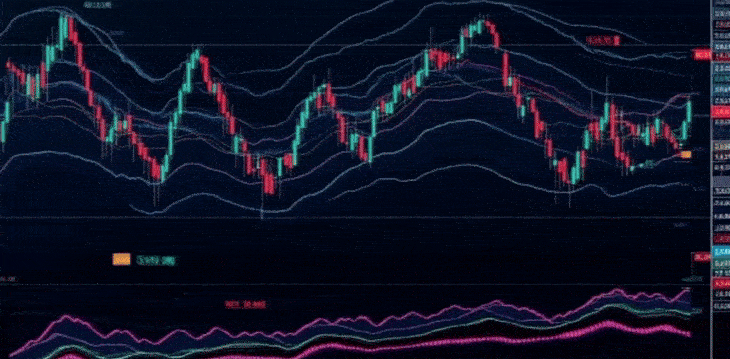Experiencing the thrill of forex trading requires understanding its multiple dangers. Traders leverage this tool as one of the most effective resources in their trade operations. Through leverage, traders control extended market positions using reduced capital.
This article covers all the leverage information.
All About Leverage in Forex Trading
The leverage strategy allows forex traders to open bigger positions with borrowed funds from their broker beyond their initial deposit amount. The system is designed to increase your trading capacity significantly. 1:100 leverage allows you to regulate a $10,000 trade using just $100 from your account balance.
Leverage is a double-edged sword. Using leverage allows traders to gain more money through increased profits, yet simultaneously enlarges their possible losses to match the gains. You must handle leverage properly to protect your trading position within CFD trading and the forex marketplace.

Types of Leverage in Forex Trading
Traders shall decide on suitable leverage levels as it influences control of their financial positions and reduces potential consequences.
The succeeding section describes three leverage varieties that match distinct trading profiles:
1. Low Leverage (1:10 – 1:50)
Best for: beginners and conservative traders.
Those who dedicate time to understanding markets and risk control measures should keep their leverage ratio at a low level. A lower ratio in leverage enables traders to maintain a reduced market exposure that shields their investment capital from swift losses during unforeseen market shifts.
A trader who invests $1000 can access trading control over $10,000 worth of market value through a leverage ratio of 1:10 to 1:50. The trading strategy controls maximum potential gains, protecting traders from severe financial losses. Institutional traders, together with capital preservation-oriented traders, typically make use of this form of leverage in their operations.
2. Moderate Leverage (1:100 – 1:200)
Best for: traders with some experience and moderate risk appetite.
This leverage ratio allows traders to experience a fair mix of profit potential and financial risk exposure. Experienced traders combine market understanding with effective risk management to enhance their trading capabilities using medium leverage levels.
A trader with 1000 dollars can handle trades of 100,000 dollars when using 1:100 leverage. The increased profit potential compared to low leverage exists only when traders set proper risk management systems through stop-loss orders.
3. High Leverage (1:300 – 1:500 or more)
Best for: experienced traders and those with strong risk management skills.
High leverage functions best when used by experts who understand market patterns and are proficient in risk containment principles. It allows traders to establish significant trading positions using minimal margins, which results in greater profits.
Security deposits of $1,000 can produce trading control over $500,000 due to 1:500 leverage capabilities. The ability to generate big profits from small price changes exists alongside quick potential losses without proper risk management procedures.
New traders should begin by setting low leverage levels, which will help improve their ability to manage risks effectively. To match trading strategies and risk tolerance levels, FXcess clients can customize their leverage settings within the MetaTrader 4 platform.

Calculating Leverage: How Do It Correctly?
Leverage calculations are essential for investors who want to succeed in online trading.
Here’s how you calculate it:
The calculation of leveraged trade value consists of dividing the total marketplace value by the amount of posted margin. The ratio allows you to determine the capital-controlled amount from their deposit margin starting amount.
For example:
The leverage for this trade becomes 100 when a $100,000-value trade is funded using a $1,000 deposit.
100,000/1,000=100
This means the leverage is 1:100.
Trader leverage equals $50,000 when using those amounts to initiate the trading transaction.
50,000/500=100
Again, the leverage used is 1:100.
MetaTrader 4 offers built-in calculators in its platform to estimate proper leverage levels. The margin calculators available at FXcess assist users in minimizing their trading risks.
Pros and Cons of Leverage in Forex Trading
Pros:
- The initial investment generates substantial profits from limited capital.
- Increased Market Exposure: Trade bigger positions with limited funds.
- More Trading Opportunities: Enter multiple trades with less capital.
- Efficiency in CFD Trading: Trade assets without large investments.
- Professional trading features offered through the MetaTrader 4 platform form part of the professional tools available at FXcess.
Cons:
- The risk of exceeding your deposited amount becomes higher when you fail to manage trades well.
- During times when your account balance reaches specified levels, your broker will force the automatic closure of your trading positions.
- Extensive trading risks develop from traders who become excessively confident in their abilities.
- Budget loss occurs swiftly when markets experience sudden shifts.
- Strong discipline is essential during leveraged trade management because of psychological stress.’

Managing Forex Leverage Risk
Starting a trade with leverage gives traders greater potential gains, but it simultaneously intensifies losses during market fluctuations. Proper risk management becomes essential because small market price movements create both major profits and extreme losses in trading.
Here are some tips:
- Place Stop-Loss Orders to protect investments by defining automatic selling conditions.
- Short-term traders should begin with leverage ratios of 1:10 or 1:50 to lower their trading exposure to the market.
- Market traders at FXcess enable negative balance protection that protects deposits from exceeding initial investment.
- Regular checks of your available free margin should be a permanent habit to prevent margin calls.
New traders should employ the FXcess Demo Account in MetaTrader 4 to test strategies before conducting actual trades with real funds.
Conclusion
Leverage remains influential in forex trading, yet users should employ thoughtful management. Using leverage enhances profits, yet it strengthens losses at the same time.
FXcess delivers through MetaTrader 4 platforms a safe leverage system that enables traders to achieve maximum potential. Information about leveraging, together with the proper implementation of trading tools, helps traders build optimized approaches.
FAQs
Which leverage is best for beginners?
New forex traders should utilize leverage ratios between 1:10 and 1:50 for their trading operations. A lower leverage ratio safeguards money and minimizes serious monetary losses for a beginner studying forex trading.
What does 1 to 500 leverage mean in forex?
Using leverage at a 1:500 level allows you to control $500 trades with each dollar in your account. A better profit potential exists at the cost of greater loss potential.
How much is 1x leverage?
Using no leverage in trading means a 1:1 ratio between capital and investment size. Your trading positions match your account value since you have no borrowed capital.
How much leverage is safe?
Leverage levels become safe when you review your trading experience and how much risk you can tolerate. Most traders consider 1:50 to 1:100 manageable. You need to exercise caution when using high-leverage amounts.
Is leverage interest-free?
In foreign exchange trading, applying leverage does not involve any interest charges. Overnight use of leveraged positions with brokers can result in swap fees, determined by their conditions and the selected trading assets.
Disclaimer:
This information is not considered as investment advice or an investment recommendation, but instead a marketing communication. FXCess is not responsible for any data or information provided by third parties referenced, or hyperlinked, in this communication
